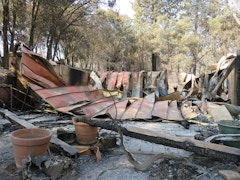
86 results
-

-

The Facade and Energy Codes
- Paper by Elliot Glassman
Ever-increasing performance requirements in the latest version of the energy codes are compelling project teams to consider the thermal performance
-
Integrated Energy Analysis
- Paper by Greg Verabian, Saurabh Shrestha, Laure Michelon,
<p>Energy codes across the country are progressively getting stricter and increasing the threshold for a baseline building’s energy performance.…
-
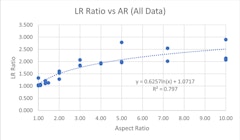
Fixed Edge Supports
- Paper by James G. Soules, Ph.D., P.E., S.E., P.Eng., SECB, F.SEI, F.ASCE · Stephen M. Morse, Ph.D., P.E., M.ASCE · Scott H. Norville, P.E., Ph.D.
Model building codes and standards in the United States use a probabilistic model to define glass load resistance (LR). In general, these model
-

Pioneering the Structural Terracotta Mullion Façade
- Paper by Victoria Ereskina · John Neary
Architects today must explore alternative enclosure materials to meet evolving energy codes and embodied carbon regulations. Terra cotta has been
-

Thermal Bridging and Building Facades
- Paper by Ivan Lee,
<p>Thermal bridging through building façades have been overlooked by designers and building energy codes and standards in the past, which has led to…
-

Environmental Facade Perspective
- Paper by Patricia Shaw, M Arch., MSc Facade Engineering, Facade Specialist
<p>Designing a sustainable rainscreen wall assembly has become an essential part of most new construction projects. Industry principles and energy…
-

Energy conservation code updates promise to reshape the way facades are designed
- Article by Elliot Glassman
Ever-increasing performance requirements in the latest version of the energy codes are compelling project teams to consider the thermal performance of the building envelope more rigorously than ever before.
-

Thermal bridging: The missing key to low energy building design
- Article by Ivan Lee
Thermal bridging through building facades have been overlooked or over-simplified by designers and building energy codes and standards in the past, which has led to higher space heating and cooling loads, occupant discomfort, and higher risk of condensation.
-
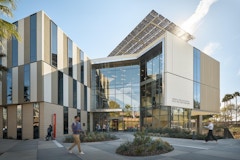
Designing with Photovoltaics
- Paper by Wayne Walker · Julia Ragragio Ruiz, LEED AP BD+C · Sam Crawford
Photovoltaics (PV) have been utilized in buildings for decades, especially in Europe where legislative support has largely driven the market. With
-
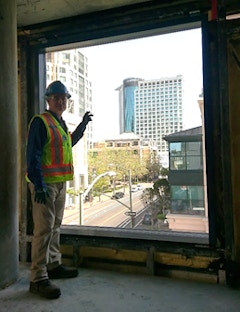
Infinite Panel System
- Paper by Mike Ryan · Brian Stern · Michael Adams
Today, building facades are expected to do much more than merely provide shelter, which is driving the need for higher performing envelope solutions.
-
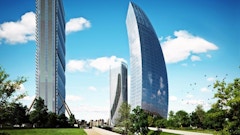
Fire Safety Facade Design
- Paper by Rigone Paolo · Mazzucchelli Enrico Sergio · De la Fuente Ceja Blanca Judith
Nowadays the construction industry is characterised by high multifunctional and complex buildings with innovative facade systems. Unlike a simple
-

The Butterfly
- Paper by Venelin Kokalov · Shinobu Homma, Architect AIBC, AAA, MRAIC · Amirali Javidan · Zhuoli Yang, AIA, NCARB, LEED AP BD+C
Providing a unique and integral cladding/envelope solution suited for high-rise buildings has been an inherent challenge for this building typology
-

The Passive House Network - Fenestration Focus
- Event by The Passive House Network
The Passive House Standard has driven a global shift in the performance expectations of what a fenestration system can and should provide, and as demand grows is transforming fenestration manufacturing from Ireland to China.
-

Facade Mock-ups
- Paper by Andy Lang, AScT, Principal / Facade Specialist
<p>Curtain walls and window walls are typically specified to meet a variety of different performance and testing criteria, some of which can be quite…
-
Rammed Earth & Wildfire
- Paper by Brittany Dhawan, AIA
California is set to be drier and more drought prone with climate change. Wildfire and the subsequent loss of life and housing is a huge challenge.
-

-

Finally
- Paper by Michael Mulhern,
<p>For over 60 years architects, engineers, and consultants have been specifying stainless steels for use in building skins and in some structural…
-
Solid Surface Material for Facades
- Paper by Christopher Payne, AIA, LEED AP, Associate
<p>Navigating the building code, while challenging in any respect, can be even trickier when considering the use of emerging materials on building…
-

Thermal Bridging and Building Facades
- Article by Ivan Lee, P.Eng., M.A.Sc.
Ivan Lee, a Building Science Consultant at Morrison Hershfield recognizes the importance of mitigating thermal bridging to meet low energy targets for buildings. He points out that many jurisdictions are starting to incorporate thermal bridging into their codes and standards

